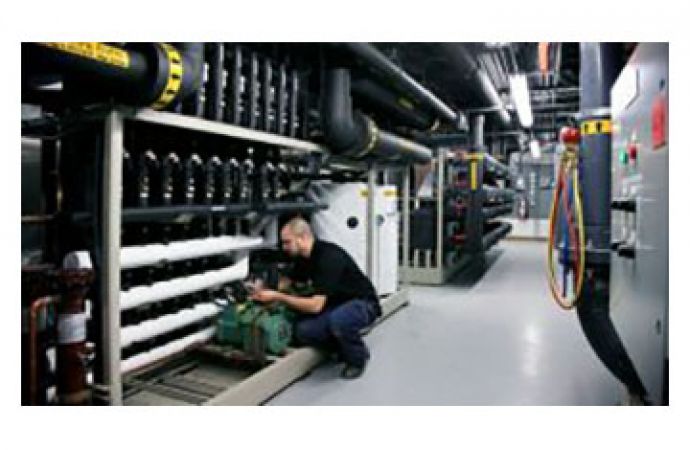The installation of an R290 (propane)-CO2 cascade in a Whole Foods store in Santa Clara was widely heralded as the latest in a long line of innovations by Carnot.

As reported by R744.com, Carnot designed the hydrocarbon-CO2 cascade system for Whole Foods’ new highly efficient supermarket in the US state of California.
“We had a request from Whole Foods that they want to try a propane [system] and they needed to find an innovative company. So they asked us and we designed the system for them,” Carnot Refrigeration President Marc André Lesmerises told R744.com.
They went for a DX [direct expansion] system on the low temperature side for defrosting, using a secondary system for medium temperatures. A pump recirculates the CO2 on the medium temperature side and both refrigerant loops have condensing units on the roof rejecting the heat.
There are seven condensing units on the roof in total., each of which contains “around 50 pounds of propane,” Lesmerises says.
An exercise in working with propane
Carnot was forced to innovate in designing its first R290 system. Lesmerises told R744.com: “The construction for the condensing unit was a little bit more complicated – so we struggled with some parts. Now we have our design done and the right component was approved by the CSA [Canadian Standards Association]. Apart from this the installation and running of the system went smoothly”.
Carnot describes the development of the system as a great exercise in discovering what they are capable of achieving.
“We like to evaluate the operation of a lot of different technology, because sometimes we are surprised by new things that you do not initially expect,” said Lesmerises.
The firm will compare the performance of their system to that of a similar ammonia/CO2 cascade system in a Whole Foods store.
Still putting faith in CO2 transcritical
“We expect and we hope that it will not be just the one single system,” said Lesmerises. “We know there is an interest in propane in the US. So […] we can show Carnot being a leader in this market as well as the CO2.”
Propane systems often require extra components, making them more expensive than CO2 transcritical systems. “I really believe CO2 transcritical is the best system for all climate conditions,” Lesmerises said.
Nonetheless, ultimately the choice of system type rests with the customer, he stressed.
Future Carnot innovations
Carnot is working to improve its CO2 systems and adapt them to include the latest technological innovations.
“Ejectors and parallel compression are key to improving the transcritical CO2 system,” Lesmerises said. “We just developed and implemented a new way of defrosting with ejectors that brings a lot of efficiency and the frost, on both sides. So we believe in the ejector and the parallel compression more than any other type of CO2 installation.”
During a transcritical cycle, ejectors help to reject the heat when the system is operating in the high temperature part of the refrigeration loop. Carnot’s new ejector will “reject the heat where we need to. So we improve the defrost process at the same time, with the ejector,” Lesmerises said.
“It’s a totally new type of system” and once which they are already testing in the field.
Related stories





